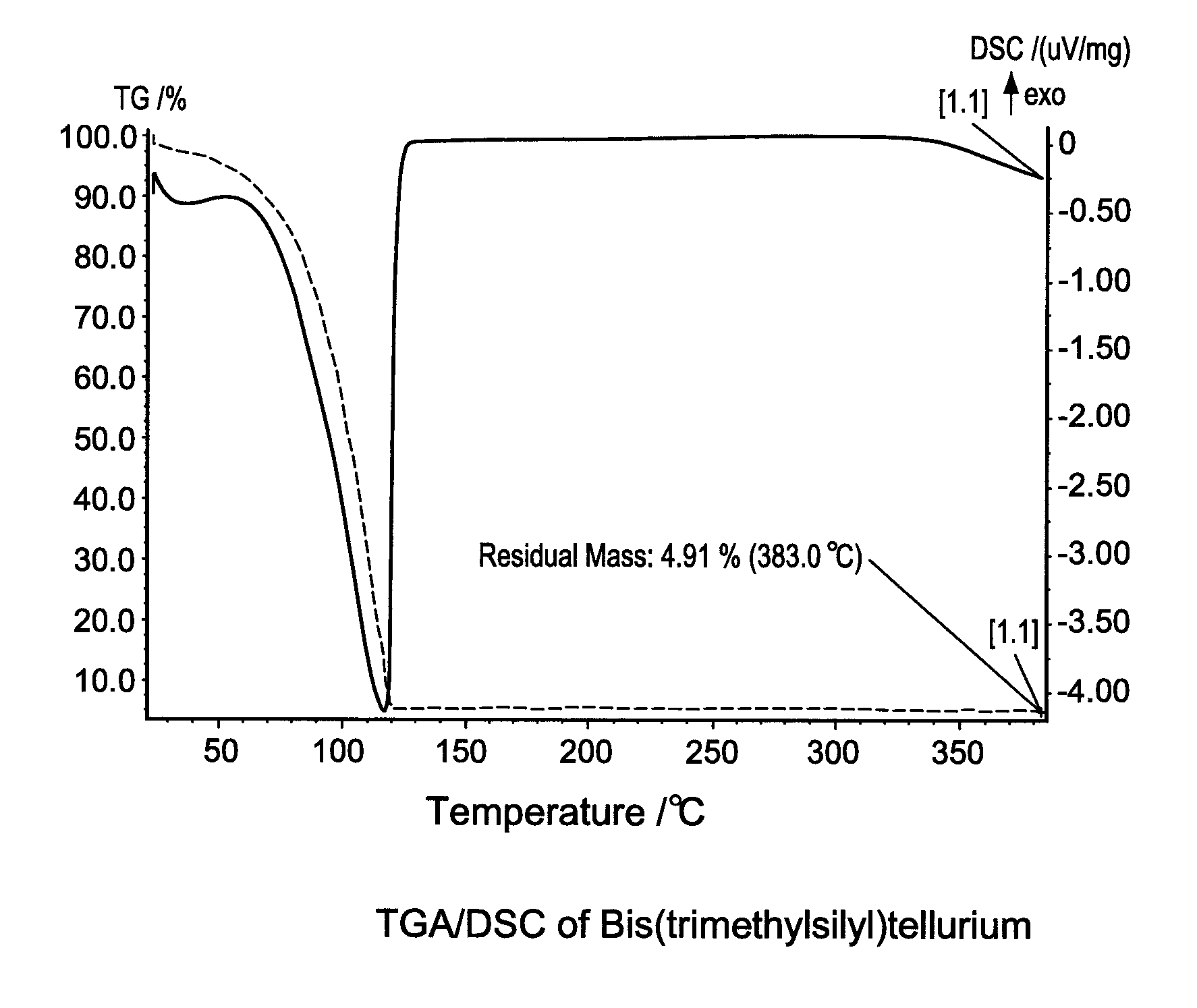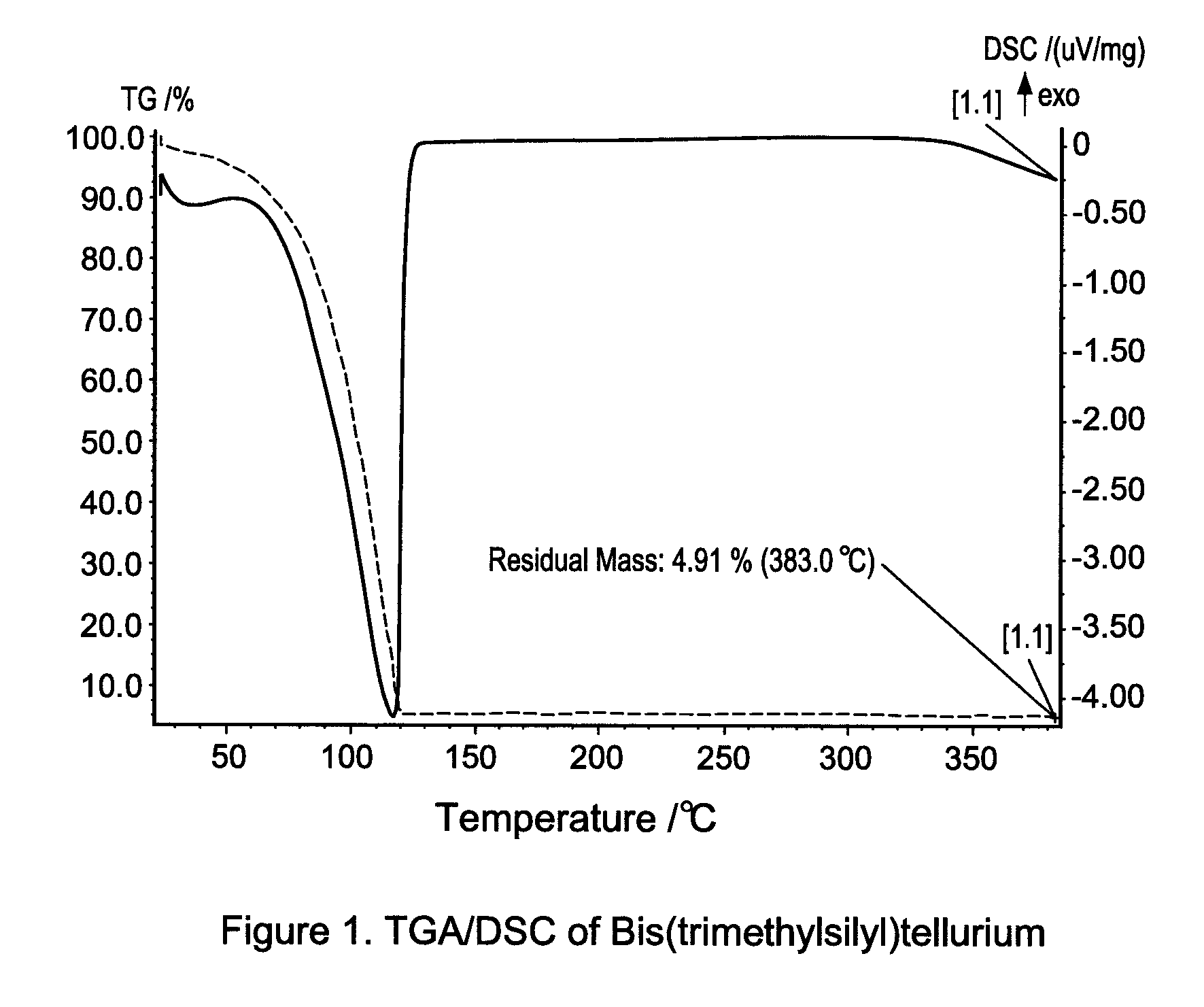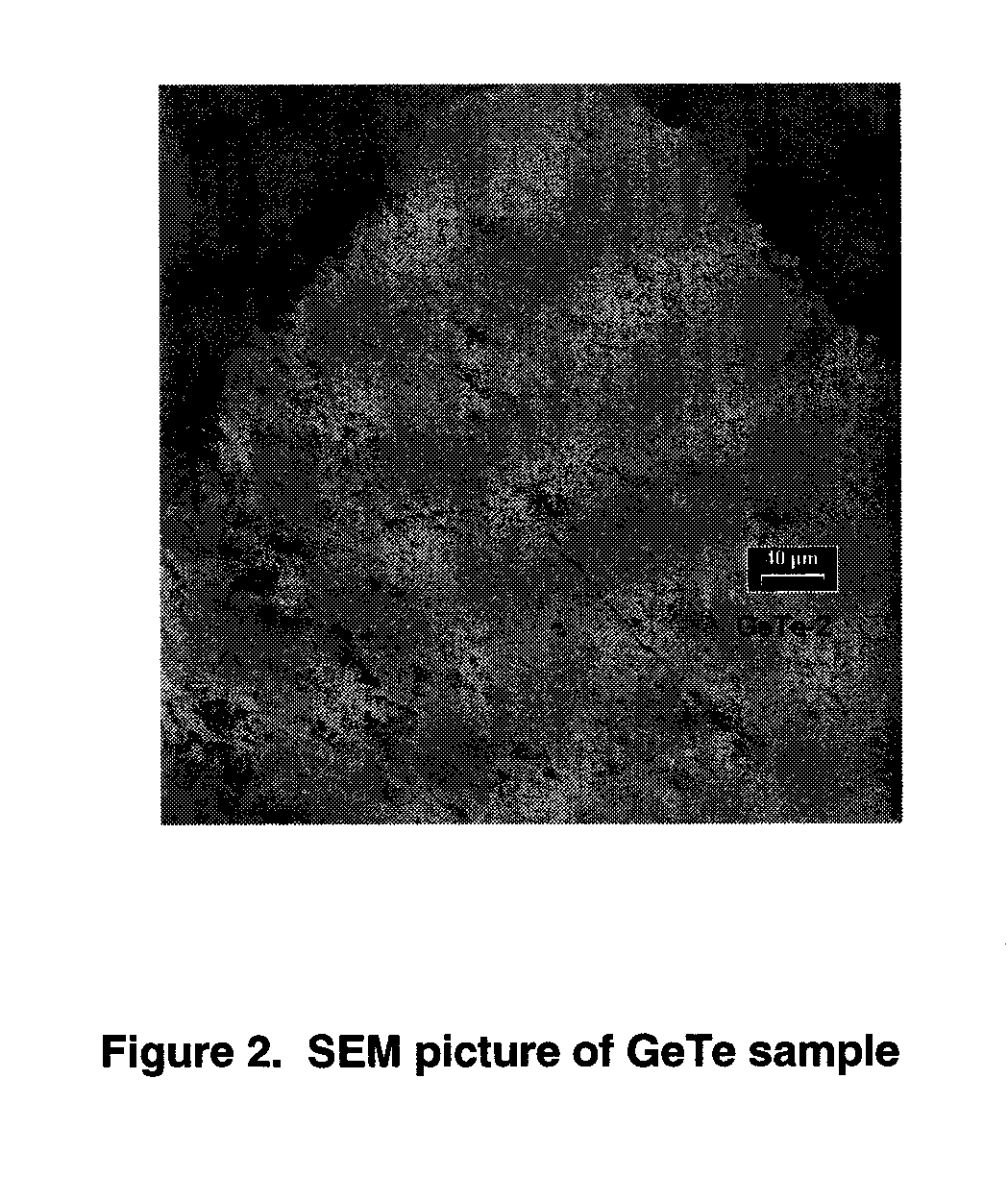Binary and ternary metal chalcogenide materials and method of making and using same
a technology of chalcogenide materials and metals, applied in the direction of metal material coating process, coating, pretreatment surface, etc., can solve the problems of high reset current level, inability to achieve high comformity of conventional sputtering process for gst film deposition
- Summary
- Abstract
- Description
- Claims
- Application Information
AI Technical Summary
Benefits of technology
Problems solved by technology
Method used
Image
Examples
working examples and embodiments
Example 1
Synthesis of Bis(trimethylsilyl)tellurium
[0110]1.28 g (0.01 mol) 200 mesh tellurium powder, 0.48 g (0.02 mol) lithium hydride, and 40 ml tetrahydrofuran (THF) were placed in a 100 ml flask. With stirring, the mixture was refluxed for 4 hours. All black powder of tellurium disappeared, and a muddy color precipitate was formed. Then, the mixture was cooled down to −20° C.; 2.2 g (0.02 mol) trimethylchlorosilane was added. The mixture was allowed to warm up to room temperature. After stirring for 4 hours, the mixture was filtered under inert atmosphere. The solvent was removed by distillation. Bis(trimethylsilyl)tellurium was purified by vacuum distillation, b.p. 50° C. at 2.5 mm Hg.
[0111]Thermo-gravimetric analysis (TGA) and differential scanning calorimetry (DSC) are used to characterize Bis(trimethylsilyl)tellurium. The results were shown in FIG. 1. The compound is stable upon heating up to 120° C. It can be conveniently stored and handle at room temperature or with mild he...
example 2
Synthesis of Tetramethyldisilyltellurium
[0112]3.84 g (0.03 mol) 200 mesh tellurium powder, 1.44 g (0.06 mol) lithium hydride, and 40 ml tetrahydrofuran (THF) were placed in a 100 ml flask. With stirring, the mixture was refluxed for 4 hours. All black powder of tellurium disappeared, and a muddy color precipitate was formed. Then, the mixture was cooled down to −20° C., 5.77 g (0.06 mol) dimethylchlorosilane was added. The mixture was allowed to warm up to room temperature. After stirring for 4 hours, the mixture was filtered under inert atmosphere. The solvent was removed by distillation. Tetramethyldisilyltellurium was purified by vacuum distillation, Boiling Point 50° C. at 4 mm Hg.
example 3
Synthesis of Trimethylsilyl-t-butyltellurium
[0113]6.4 g (0.05 mol) 200 mesh tellurium powder, 100 ml diethyl ether, and 20 ml 2.5 M t-butyllithium in hexane were added to a 250 ml flask. At 0° C., the mixture was stirred for 8 hours. All black powder of tellurium disappeared, and a muddy color precipitate was formed. To this mixture, 5.4 g (0.05 mol) trimethylchlorosilane was added. The mixture was allowed to warm up to room temperature. After stirring for 1 hour, the mixture was filtered under inert atmosphere. The solvent was removed by distillation. Trimethylsilyl-t-butyltellurium was purified by vacuum distillation.
PUM
| Property | Measurement | Unit |
|---|---|---|
| pressure | aaaaa | aaaaa |
| deposition temperature | aaaaa | aaaaa |
| deposition pressure | aaaaa | aaaaa |
Abstract
Description
Claims
Application Information
 Login to View More
Login to View More - R&D
- Intellectual Property
- Life Sciences
- Materials
- Tech Scout
- Unparalleled Data Quality
- Higher Quality Content
- 60% Fewer Hallucinations
Browse by: Latest US Patents, China's latest patents, Technical Efficacy Thesaurus, Application Domain, Technology Topic, Popular Technical Reports.
© 2025 PatSnap. All rights reserved.Legal|Privacy policy|Modern Slavery Act Transparency Statement|Sitemap|About US| Contact US: help@patsnap.com



